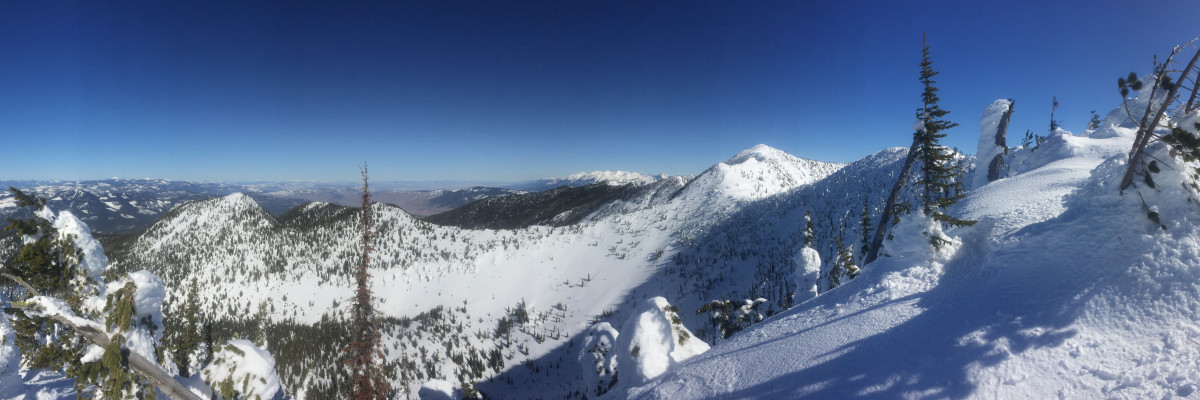The avalanche danger for the West Central Montana backcountry is Moderate. The danger will be low this morning but will rapidly climb to moderate as the day progresses. Evaluate snow and terrain carefully to identify features of concern. Human triggered avalanches are possible in isolated terrain.
Good morning, this is Logan King with the West Central Montana Avalanche Center’s avalanche advisory for March 13th, 2018. This danger rating does not apply to operating ski areas, expires at midnight tonight and is the sole responsibility of the U.S. Forest Service.
Weather and Snowpack
Continued clear conditions have resulted in no new snow across the region. Mountain temperatures this morning range from the teens to low thirties. Winds in the southern Bitterroot are 14 mph gusting to 19 mph from the SE. In the Rattlesnake this morning winds are from the NW at 11 mph gusting to 17 mph.
Travis and Theo were riding at Granite Pass yesterday. They found warm snow that produced loose wet activity later in the day and saw a natural windslab that failed on a shaded North aspect. Tim and I toured in the Rattlesnake yesterday and found loose wet avalanches and cornices to be an increasing concern.
Warm temperatures and significant solar radiation will make loose wet avalanches the main concern today. Loose wet avalanche activity will increase later in the day as the mercury climbs and the sun affects the snow surface. Loose wet avalanches will be easily triggered later in the day on the southern half of the compass. These avalanches can be managed with terrain selection and timing when you choose to recreate or travel in avalanche terrain. Loose wet slides are small but can be dangerous in areas that have terrain traps that increase the consequences of getting caught in a slide.
The warm temperatures and clear skies have significantly weakened cornices. Cornices have a nasty habit of breaking back farther than expected and should be treated with respect. Give cornices a wide berth because they are large and can create large avalanches if they fall onto a slope where you are traveling. Avoid traveling on or under cornices especially later in the day.
Wind slabs are the other avalanche concern today. Wind slab activity continues to diminish but can still be triggered in isolated locations. Wind slabs are stubborn but have potential to fail on cold and shaded aspects at upper elevations. Carefully look for signs of wind loaded terrain before committing to avalanche terrain.
Avalanche and Weather Outlook
Warm and sunny conditions today will lead to increasing avalanche danger through the day. A shift to a more active weather pattern looks to develop tomorrow. Wednesday has the potential of rain up to 6,000 feet.
If you are out in the backcountry, please send us your observation, these are very helpful in producing the advisory.
Ski and ride safe.
























